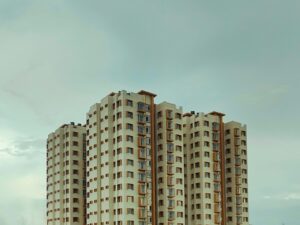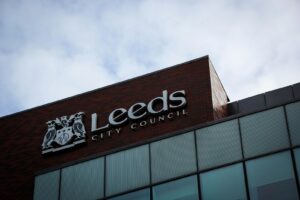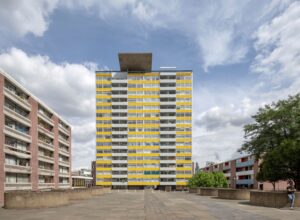When we talk about localism, what we mean by it? Local used to mean fixed geographical areas within which people grew up, went to school, worked, developed friendships, met their spouse, brought up children, retired and died. Not only were the school, workplace and shops nearby, for most people, they couldn’t travel any further than the area they lived in.
But what does ‘local’ mean in a world where we can be connected with and exposed to different people, emergent ways of thinking and doing and different cultures?
Whereas local defined in geographic terms creates not just physical boundaries, like within which catchment area we send our children to school or which doctors’ surgeries we go to, digital can help break down those borders. It opens us up to a world where we can curate the networks and activities that we want to connect with, but also where we can be exposed to people that we couldn’t experience in our local neighbourhoods.
We can do everything online, learn new skills, go to work, shop and make friends. We participate in all of these activities in different ways to our neighbours.
Digital opens up new opportunities, but also engenders new forms of inequality. It stimulates new forms of community, while also creating new forms of social autism. You might be part of an online study group with people from different countries, while your neighbours might be trying to find the time to go to college in between work and putting the kids to bed. You might be 3D printing chocolate at home and selling it to people in the Middle East, while your neighbour might be working out how to keep their sweet shop afloat.
‘Locality is visceral, not conceptual. When we organise
close to home, change happens the way we want it to.’
As Tessy Britton argues, ‘Digital has excited people with its interest, immediacy and interactivity — people want that translated into their live local experiences’.
This isn’t just about how we use technology, it’s about how the labour market has disconnected us from our neighbourhoods. Even if we’re not working online, which most of us aren’t…yet, many of us don’t work in the area we live. We spend more time with our fellow commuters, let alone our colleagues, than our neighbours. Many of us have to retire in old people’s homes that are far away from where we live, because we can’t afford anywhere closer.
Simon Parker comments, ‘Places are the 21st century what factories were to the 20th. Digital drove that’.
The opportunities that digital provide us don’t reduce our need – even if it might complicate it – for feeling part of a community of people that we can bond with, trust, and depend upon.
On top of that, local communities are experiencing the impacts of globalisation, from offshoring jobs to incoming migration. Even if these issues are often only discussed from a national frame, as the JRF argues; ‘global processes such as migration are ostensibly negotiated at a local level because their impacts are felt through people’s everyday experiences.’
So, in a connected world, how can we make sense of the world around us? How do we cope with the changes taking place?
1. Civic literacy: learning to make sense of the world around us
Our communities are becoming more and more transient – with people from other countries and generations moving in and businesses and classes moving out. Our lives are also becoming increasingly transient – with people having to move from job to job and in many cases from one lifestyle to another. Other people are trapped, in their neighbourhoods, since they can’t afford to move anywhere else, but also because they depend so much on their neighbours for support, or that others depend on them. They’re also becoming more connected, as we interact with people from other cultures at the click of a button. We’re therefore confronted not just with other languages, but other social codes, other cultural systems.
The closest institutional equivalents we have to being able to interpret and create meaning from the world we live in are citizenship classes for pupils, national citizens’ service for school leavers and citizenship tests for newcomers. But these tools make the assumption that we only need to understand the world around us once and that only children, young people and foreigners need to understand how to live together.
Developing civic literacy isn’t about being able to speak to people in their language or even learn about our history, it’s about making sense of the world around us:
- Supporting people to help neighbours talk about the issues that matter to them, like Hack (y)our Borders, Transformed by You and Community Philosophy are doing. For example, asking people what they do to stay healthy and what would make it easier for them to do those things helps them connect what they do with what they’d like to do. Discussing how they currently keep fit helps people form ideas about ways they could stay healthy. It also helps them find out about local initiatives and take away personal connections that they can build on outside the workshops.
- Mapping the practices and values of local neighbourhoods, like the Community Lovers Guide, Transeuropa Caravans and Unseen Tours are doing, helps people discover the unseen stories, learn from people exhibiting unusual behaviours and make sense of the civic cultures around them.
- Building on the trust that social institutions like libraries or churches have built over the years as places of learning, to introduce new forms of local know how, like Common Libraries or the Common Room are doing.
2. Civic stewardship: helping people cope with the changes taking place
The debate over the role of different local actors has often assumed these institutions have the same assets in every locality – whether it’s money, trust or influence – and that each actor had to have a unique role. Businesses to create jobs, charities to help people, schools to educate and councils to manage services.
What if all these actors became civic stewards:
- Developing third spaces which can facilitate systems change, like the Community Hubs or Open Works do, combining asset mapping, intelligence gathering and supporting people to develop activities
- Building ecosystems of systems change to take ownership over tackling systemic issues, like dementia-friendly communities do – as a way of trying to resocialise risk from individuals to communities, businesses & institutions
- Developing the governance that institutionalise the values that local practices are embodying, like Sharitories is doing with a Collaborative Territories Toolkit and Bologna providing the legal tools for commons-based collaboration
3. Civic power: influencing the world around us
Power doesn’t exist within individuals or even institutions – whether that be the prime minister, Whitehall or even Google. They exist in the relations between people. So what does power look like at a local level?
Demos defines political power in terms of seat marginality and voter turnout. The areas with the most power are situated in the home counties and yet where have the greatest campaigns been won? Has the south east been able to rival anything similar to the Scottish convention? What relationship is there between Birmingham having the most powerless constituencies and the most thriving civic activism?
So given how much globalisation affects our everyday lives, how do we build power locally that can have an impact beyond our area’s geographic boundaries?
Naomi Klein argues that it is more effective to build power starting from the local than the global, saying ‘you can’t love a whole planet’. But as Sitrin and Azzellini argue in Liam Harrington’s article on neighbourhood assemblies in Greece: ‘We can be together every day in the neighbourhood, we can talk about our common problems. We resist evictions, go to court with neighbours and occupy relevant buildings. This is not tribal localism. This campaign has inspired countless others who have seen shades of their own housing struggles reflected in that of the group. We share what we do, we promote the work of other causes, and we learn from what is happening elsewhere. Locality is visceral, not conceptual. When we organise close to home, change sometimes happens the way we want it to.’
As a party which crowdsourced its candidates and helped increase turnout by three-quarters reminds us, ‘We can only really connect with our destiny if we can smell and touch it in our village, town or neighbourhood.’
















Leave a Reply